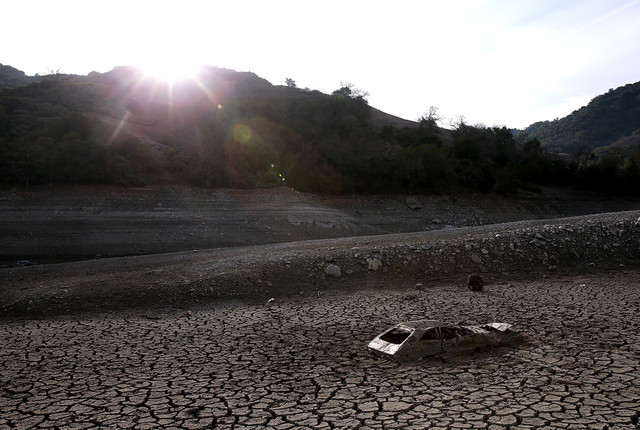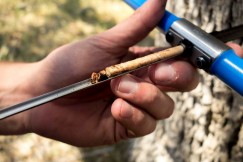
California’s current drought is pretty exceptional — like the driest in about a millennium — according to an article published today in the journal Geophysical Research Letters by scientists with the University of Minnesota and Woods Hole Oceanographic Institution in Massachusetts.
But how could they know that? There weren’t a lot of rain gauges in California in 800 A.D. — at least, not the plastic kind.
So authors Daniel Griffin and Kevin Anchukaitis looked to tree-ring samples from California blue oaks.

“California’s old blue oaks are as close to nature’s rain gauges as we get,” said Griffin, a NOAA Climate and Global Change Fellow with Woods Hole Oceanographic Institution. “They thrive in some of California’s driest environments.”
The researchers collected their own blue oak tree-ring samples from south and central California, giving them a pretty good idea of yearly precipitation in the area back to 1293. They then augmented their samples with data from the North American Drought Atlas and the National Oceanic and Atmospheric Administration Palmer Drought Severity Index.
